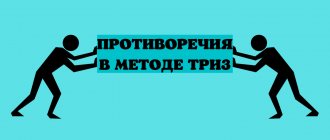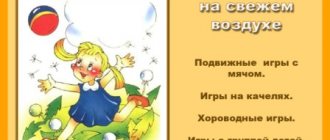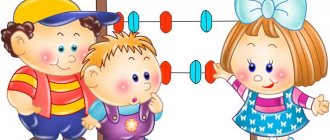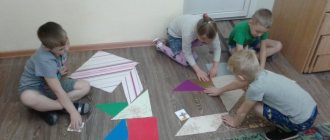LiveInternetLiveInternet
TRIZ https://forum.razumniki.ru/showthread.php?t=360 TRIZ is a science that studies the objective laws of systems development and develops a methodology for solving problems. Methods of technical creativity appeared as a need to increase the productivity of intellectual labor, primarily in the sphere of production. Two concepts can be traced in their development. According to the first, the development of technical systems is a consequence of processes occurring in the thinking of inventors; new strong ideas arise as “insights” from outstanding individuals with a special mindset, and this process cannot be studied or replicated. As a result, methods of psychological activation of creativity and enumeration of options emerged. According to the second concept, changes in artificial systems do not occur according to the subjective will of a person, but are subject to objective laws and occur in the direction of increasing the level of their ideality. The patterns identified by G.S. Altshuller formed the basis of a system of laws for the development of technical systems and a new science of creativity - the theory of inventive problem solving (TRIZ). The author of TRIZ, G.S. Altshuller, created it as a methodology for finding solutions to technical problems. Long-term use of TRIZ develops in inventors the qualities of thinking that psychologists evaluate as creative: flexibility, range, consistency, originality, etc. These opportunities made it possible to develop pedagogical technologies for the development of thinking on the basis of TRIZ. Basic concept: knowledge of individual subjects is not transmitted in the classroom, but is acquired by students during the educational process and is not a goal, but a means for developing the qualities of a creative personality. In the educational process, this allows subject teachers to present their subject as a real problem, and also provides ample opportunities for the development and implementation of integrated learning. Currently, a set of exercises based on TRIZ has been developed, which includes methods and techniques that develop creative thinking and its main component - imagination. The learning process is aimed at understanding each train of thought, and in general - at creating a culture of thinking. A culture of thinking is the result of a purposeful influence on the process of a subject performing mental operations in order to obtain the most effective solutions to problem situations. Such an influence on the subject can be carried out by the education system. Education should become training in the art of using knowledge, developing a style of thinking that allows one to analyze problems in any area of life. Biography of G.S. Altshuller: Born on October 15, 1926 in Tashkent. Then he lived in Baku. Graduated from the Azerbaijan Industrial Institute. The first publication (together with R. Shapiro) devoted to the theory of invention - Altshuller G.S., Shapiro R.B. “On the psychology of inventive creativity” // Questions of psychology, 1956, No. 6. Inventor, Author of the Theory of Inventive Problem Solving (TRIZ), developer of the business game “Life Strategy of a Creative Personality” (ZhSTL), a system of techniques for developing creative imagination (CTI). Writer. He began publishing science fiction works (under the pseudonym Genrikh Altov) in 1957. Debut publication - the story “Zinochka”, co-authored with Vyacheslav Felitsyn. One of the leading Russian science fiction writers of the first half of the 1960s. Author of the “Register of Fantastic Ideas” (a kind of patent fund of world science fiction ideas). He died on September 24, 1998 in Petrozavodsk. EXPLANATORY NOTE 1. Games to develop the ability to identify the functions of an object 2. Games to determine the line of development of an object 3. Games to identify supra-system connections. 4. Games for determining the sub-system connections of an object 5. Games for combining the super- and sub-systems of an object 6. Games for the ability to identify the resources of an object 7. Games for comparing systems 8. Games for classifying an object 9. Universal system games. ——————————————————————————— EXPLANATORY NOTE Pedagogical science has analyzed the essence of the concept of “creative thinking” (L.A. Venger, N.E. Veraksa , L. S. Vygotsky, L. A. Grigorovich, O. M. Dyachenko, N. N. Poddyakov, E. E. Sapogova, etc.). It has been determined that creative thinking already in preschool age begins to be systemic in nature and among the factors that have the greatest influence on its formation are the level of development of creative imagination and the maturity of intellectual operations (analysis, synthesis, comparison, establishing cause-and-effect relationships, etc.). The main pedagogical means of developing creative (systemic) thinking is rightfully considered a didactic game. The collection presents a gaming complex that must be used both in various types of activities and in free time. The concept of systematicity developed by G.S. is taken as the basis for constructing the complex. Altshuller (1947). Systematic thinking in relation to an object is the ability to carry out the following mental operations in a complex: select an object and determine its function; determine the line of development of both the object itself and its functions; identify the components of an object; determine the basis for constructing the classification structure in which the object is located; compare an object with other objects based on various characteristics. Based on these mental steps, work with the child is built taking into account the formation of each component: object - function (resources); object - subsystem; object - supersystem; development of an object over time; comparison of systems based on a number of characteristics. The result of training is the ability of a child of senior preschool age to describe all the systemic connections of any object in the material world. Positive results are achieved by working to develop a high level of imagination. It is more expedient to organize it during the process of each game, but with the condition of dividing the pictures of the world into fantastic and real. The games are presented as a description of the expected dialogues between the teacher (B) and children (D). 1. Games to develop the ability to identify the functions of an object 1.1. “What can he do?” (game for children from 3 years old) Rules of the game: The presenter names the object. (The object can be shown or guessed using a Yes-No game or a riddle.) Children must determine what an object can do or what can be done with its help. Approximate course: B: TV. D: It can break, it can show different films, cartoons, songs, it can gather dust, turn on and off. Q: What can the ball do? D: Jump, roll, swim, deflate, get lost, burst, bounce, get dirty, lie down. Q: Let's imagine. Our ball ended up in the fairy tale "Kolobok". How can he help Kolobok? Note: You can move an object into fantastic, unrealistic situations and see what additional functions the object has. Familiarization with the surrounding world. Q: What can a traffic light do? D: Control the movement of cars and pedestrians. He can switch. If the red light comes on, all cars will stop, and at that time the green light will be on for pedestrians and they will be able to cross the road. Q: What else can a traffic light do? D: Burn out, break down. Q: What could happen then? D: A car can push a person, it can collide with a car, that is, an accident will occur. Q: Let's imagine. So the traffic light ended up in a fairy tale... and what business did you find there? (Children's answer options). The basis of personal culture. Q: What is a polite person and what can he do? D: Say hello, politely see off guests, take care of a sick person or dog, he can give up his seat on a bus or tram to an old woman, and also carry a bag. Q: More? D: Help another person out of trouble or difficult situation. Ecology. Q: What can a plant do? D: Grow, drink water, bloom, close, may sway in the wind, may die, may smell delicious, or may not taste good, may prick. Q: What can an elephant do? D: An elephant can walk, breathe, grow. The elephant gets its own food, transports goods and people, and performs in the circus. He helps people on the farm: he even carries logs. Q: What can rain do? D: Dissolve the ice. Q: When and why? D: When the sun shines brightly, it is warm. Q: What else can ice do? D: Ice can split and crack. Q: What are the useful functions of ice? D: It should be applied to the bump (bruise). Food is stored in the refrigerator, and there is ice there. Q: What can you do with ice? D: You can paint with paints and make multi-colored pieces of ice. You can skate on the ice or just on your feet. Ice floes can be used to decorate all kinds of snow buildings. Q: What can rain do? D: Drip, pour like a bucket, create puddles, water the plants. Rain makes the air fresh and washes the roads so that they are clean and beautiful. The rain may drizzle. Musical education Q: What can a song do? D: The song lifts the mood, but if it is sad, the mood will disappear. The song can be listened to and sung. Q: What can sound do? D: Deafen, increase, decrease, sound can produce an echo, create music. Visual activity. Q: What can paint do? D: She leaves a mark on the paper, paints, splashes, draws, paints over the water and turns out to be a different color. The paint may run out and dry out. Q: What can an artist do? D: Draw pictures, paint, mix paints, get dirty with paints, sharpen pencils. Q: What can clay do? D: Lie in the ground. Get wet. Dry and break into small pieces. The clay sticks to your hands. It can be soft and then you can sculpt something out of it. Mathematics. Q: What can the number “4” do? D: Indicate the number of objects, become another number. Q: What can a triangle do? D: Be in another object, for example: a triangular clock. Q: What can the “+” sign do? D: Add, indicate a positive result, be in a book, notebook.







